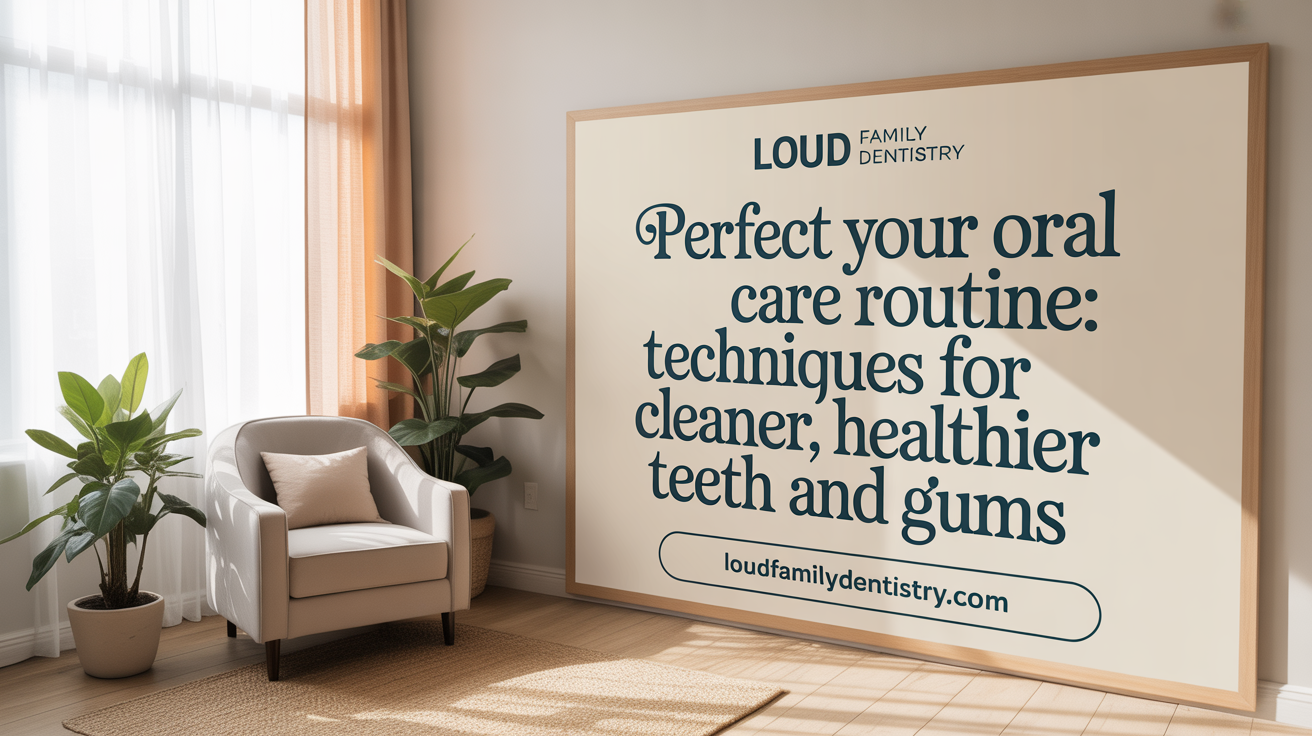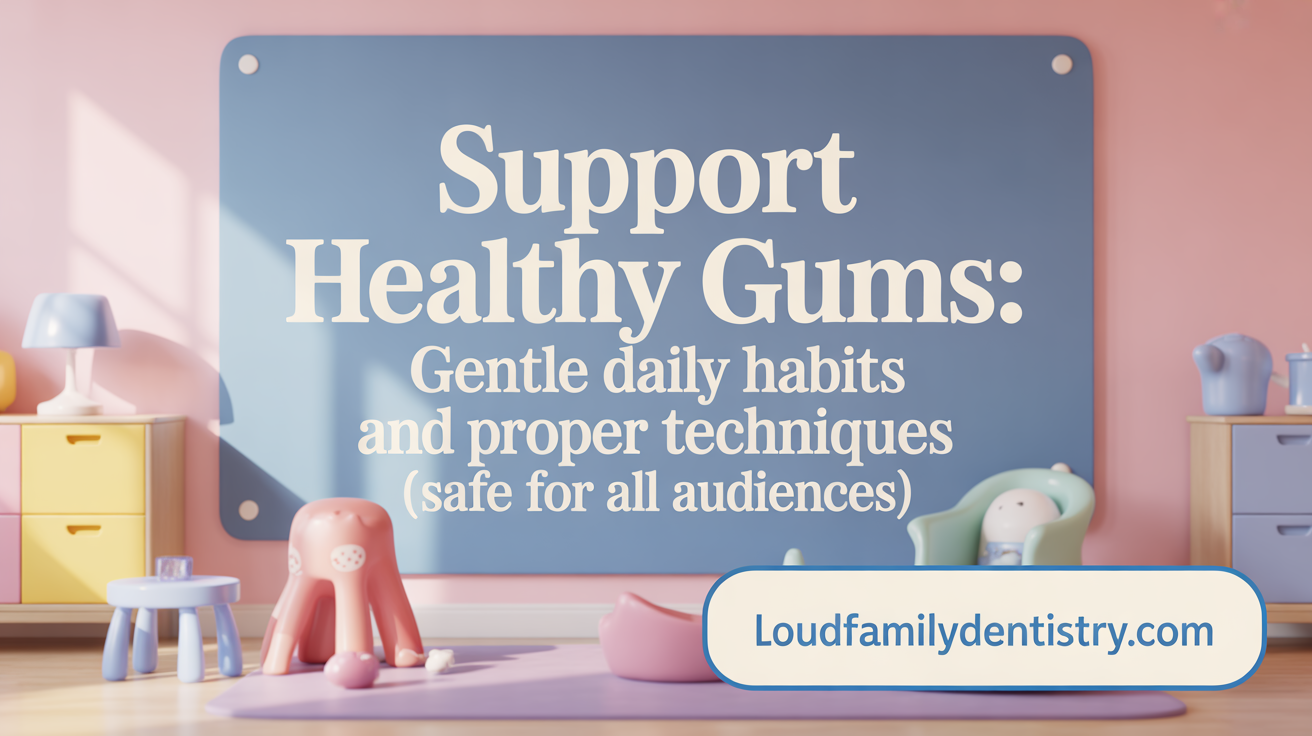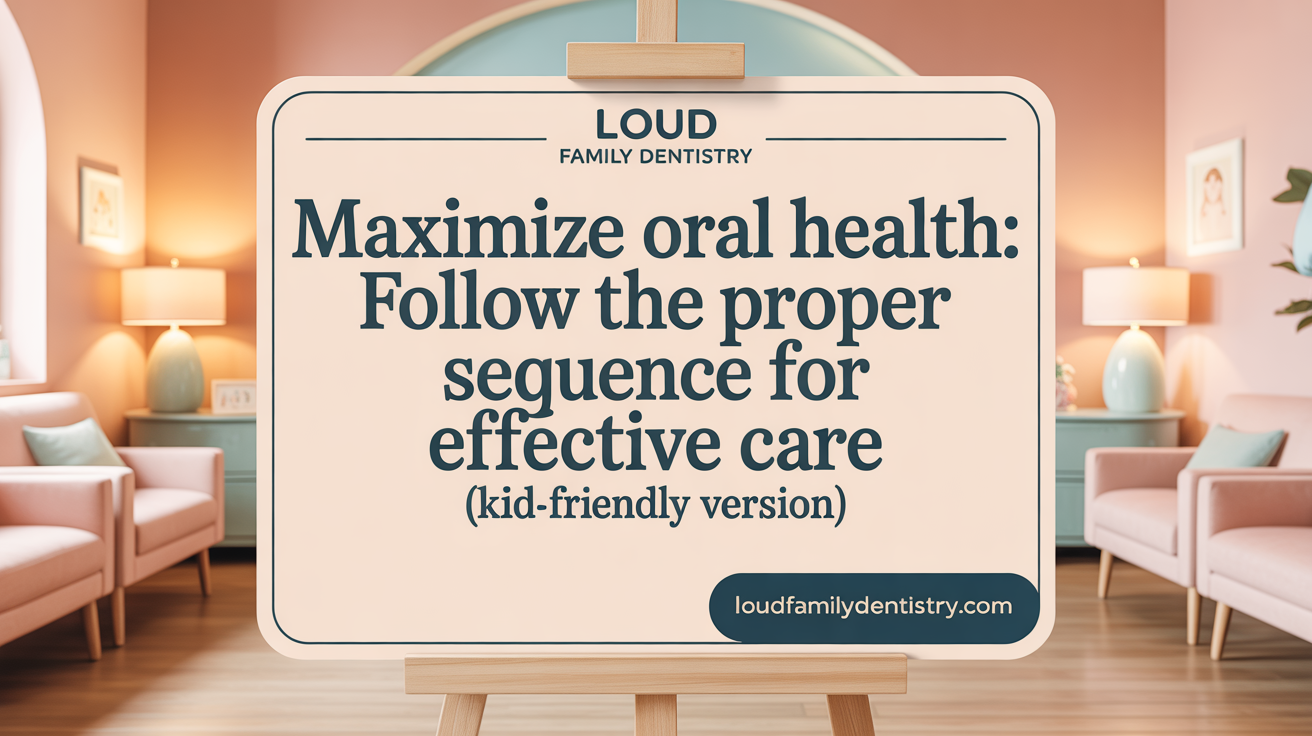The Foundation of Dental Wellness
Taking care of your teeth daily is crucial for long-term oral health. By adopting effective oral hygiene practices, maintaining a nutritious diet, and scheduling regular dental visits, you can prevent decay, gum disease, and other common dental problems. This guide outlines the key habits and techniques that support strong, healthy teeth throughout your life.
Effective Daily Habits for Strong and Healthy Teeth
Maintaining strong, healthy teeth requires consistent daily habits that support oral hygiene and overall dental health. One of the most important routines is brushing your teeth at least twice a day. Use a fluoride-containing toothpaste and a soft-bristled toothbrush, holding it at a 45-degree angle towards the gums. Move the brush gently in small, circular motions for about two minutes, ensuring all surfaces—outer, inner, and chewing—are thoroughly cleaned.
Floss daily to remove plaque and trapped food particles between teeth and below the gumline, areas that brushing alone cannot reach. If traditional flossing is challenging, tools like floss holders, water flossers, or interdental brushes can be effective alternatives.
Incorporating an antibacterial mouthwash with fluoride can strengthen enamel and reduce bacteria, but it should be used separately from brushing—preferably after brushing and flossing—to prevent rinsing away the fluoride on teeth.
Hydration plays a vital role in dental health. Drinking plenty of water throughout the day helps rinse away food debris, maintains saliva production, and wards off dry mouth, which can contribute to decay. Drinking fluoridated water additionally boosts the fluoride levels in your mouth, offering extra protection against cavities.
Limiting sugary, starchy, and acidic foods and drinks minimizes acid production that erodes enamel and leads to decay. Instead, focus on a balanced diet rich in calcium, phosphorus, vitamins A and C, and other nutrients essential for strong teeth and healthy gums.
Avoiding tobacco products is crucial, as smoking and smokeless tobacco significantly increase risks for gum disease, staining, and oral cancer. Quitting tobacco not only benefits your overall health but also supports a healthier smile.
Finally, regular dental checkups, ideally every six months, enable early detection of problems and professional cleaning to remove plaque and tartar buildup. These visits are essential for maintaining optimal oral health and preventing issues before they become severe.
Adopting these habits consistently ensures your teeth remain strong, clean, and less prone to decay, improving both your dental health and overall wellbeing.
Mastering Techniques and Best Practices for Oral Care

What are proper toothbrushing techniques?
Effective toothbrushing involves using a soft-bristled toothbrush and fluoride toothpaste. The brush should be held at a 45-degree angle toward the gums, employing gentle circular motions to clean all surfaces of each tooth. Brushing should last for at least two minutes, covering outer, inner, and chewing surfaces. Don't forget to gently brush your tongue to remove bacteria that cause bad breath and contribute to decay.
How should I floss, and what tools are recommended?
Daily flossing or using interdental brushes is essential for removing food particles and plaque from between teeth and below the gumline. Gently slide the floss in a 'C' shape along the sides of each tooth, moving it beneath the gumline. For those who find traditional floss challenging, tools like floss holders, water flossers, or interdental brushes can improve reach and ease of use.
Why is tongue cleaning important?
Cleaning the tongue helps eliminate bacteria responsible for bad breath and reduces the overall bacterial load in the mouth. It’s a simple step that can be performed with a tongue scraper or the back of your toothbrush during your regular brushing routine.
How do I choose and use mouthwash effectively?
Using an antibacterial mouthwash can help reduce plaque and bacteria. Select an alcohol-free formula to prevent dry mouth and irritation. Mouthwash should be used separately from brushing — ideally after brushing and flossing — to maximize its effectiveness. Swish it around your mouth for about 30 seconds, making sure to cover all areas before spitting it out.
What is the recommended schedule for replacing your toothbrush?
To ensure optimal cleaning and protect your gums, replace your toothbrush every three to four months. Frayed or worn bristles are less effective at removing plaque, so don’t delay replacement.
What are some advanced oral care tools?
Modern tools like water flossers, interdental brushes, and electric toothbrushes can enhance your oral hygiene routine. Water flossers, in particular, are effective for cleaning between teeth, especially for individuals with braces or implants. Electric toothbrushes can provide more consistent and thorough plaque removal when used properly.
How do these techniques improve overall dental health?
Implementing proper brushing and flossing techniques, regularly cleaning the tongue, choosing suitable mouthwash, and updating your tools help reduce plaque buildup, prevent cavities, and minimize gum disease. Regular dental check-ups complement these practices by catching early signs of issues, leading to healthier teeth and gums.
| Practice Aspect | Recommended Action | Benefit |
|---|---|---|
| Proper brushing technique | Circular motions at 45-degree angle | Removes plaque effectively |
| Flossing | Daily using 'C' shape motion | Prevents gum disease |
| Tongue cleaning | Use tongue scraper or toothbrush | Fresher breath |
| Mouthwash use | Alcohol-free antibacterial formula | Reduces bacteria |
| Toothbrush replacement | Every 3-4 months | Maintains cleaning efficiency |
| Advanced tools | Electric toothbrush, water flosser | Enhanced plaque removal |
Maintaining these good practices ensures your oral health remains strong, helping you enjoy a bright smile and fresh breath while reducing the risk of serious dental and systemic conditions.
Supporting Gum Health Through Daily Practices

How can gum health be supported through daily habits?
Supporting gum health is a fundamental part of maintaining overall oral health. Developing a routine that includes gentle but thorough cleaning of gums helps prevent common issues like gingivitis and periodontitis.
Gum health starts with proper brushing techniques. It is recommended to brush at least twice a day using a soft-bristled toothbrush. The toothbrush should be positioned at a 45-degree angle toward the gumline, then moved gently in small, circular motions. This method effectively removes plaque and bacteria from the gum margins without causing irritation.
Flossing daily is another essential practice. Carefully sliding the floss in a 'C' shape between each tooth and beneath the gumline helps to dislodge food particles and plaque that the brush misses. Regular flossing reduces inflammation and supports healthy gums.
Incorporating antibacterial or therapeutic mouthwash into your routine offers additional benefits. These rinses help control bacterial growth, reduce plaque buildup, and soothe inflamed gums. It’s best to choose alcohol-free formulas to prevent dry mouth, which can exacerbate gum problems.
Avoiding tobacco products, including cigarettes and smokeless tobacco, is crucial. Smoking impairs the immune response and healing capacity of gum tissues, increasing the risk of severe gum disease and halting recovery from existing issues.
Nutrition plays a vital role. Consuming a balanced diet rich in vitamin C, calcium, and fiber supports the regeneration and maintenance of healthy gum tissue. Vitamin C, in particular, helps repair gums and reduces inflammation.
Staying well-hydrated is equally important. Drinking plenty of water helps maintain saliva production, which contains enzymes and minerals that naturally protect and strengthen gums.
Finally, visiting your dentist regularly—ideally every six months—for professional cleanings and examinations allows early detection of problems and helps remove tartar buildup that home care cannot eliminate. These routine visits are instrumental in maintaining strong, healthy gums and preventing major issues.
Dietary Habits That Promote Strong and Healthy Teeth

What dietary habits promote strong and healthy teeth?
A balanced diet plays a vital role in maintaining oral health and strengthening teeth. Consuming foods rich in calcium, phosphorus, and vitamins D and C supports the health of both teeth and gums. Calcium helps rebuild and fortify enamel, while vitamin D aids in calcium absorption. Vitamin C is crucial for healthy gum tissue, helping to prevent inflammation and bleeding.
Incorporating dairy products like cheese, milk, and yogurt provides high levels of calcium and phosphates that bolster enamel mineralization. Crunchy vegetables such as carrots, celery, and leafy greens like spinach and kale help clean teeth naturally and stimulate saliva production, which neutralizes acids and washes away bacteria.
Limiting free sugars and acidic foods is essential. Reducing the intake of sugary snacks, sodas, and processed foods lessens the food supply for bacteria that produce acids damaging to enamel. Sweets and sugary drinks should be consumed sparingly, ideally less than four times a day.
Additionally, drinking fluoridated water can help prevent cavities by washing away food debris and increasing fluoride levels in the mouth, which strengthens enamel.
Eating in a way that neutralizes acids—such as consuming fibrous fruits and vegetables at the end of meals—further protects against erosion. Crunchy, water-rich foods stimulate saliva flow, thereby aiding in the natural remineralization process.
Regular brushing with fluoride toothpaste, flossing, and routine dental visits are integral to complement a healthy diet, offering early detection and prevention of issues. Avoiding high-acid foods and beverages, and maintaining hydration also support a healthy oral environment.
In summary, adopting dietary habits rich in essential nutrients, limiting sugary and acidic intake, and choosing foods that stimulate saliva and neutralize acids form the foundation of strong, healthy teeth.
Optimizing Your Oral Hygiene Routine: The Proper Sequence

What is the proper sequence for an oral hygiene routine?
Establishing a correct order for your oral care practices maximizes their effectiveness and ensures your teeth and gums stay healthy. The routine typically begins by rinsing your mouth with warm water. This step helps loosen and remove food debris, making subsequent cleaning more effective.
Next, flossing should be performed. Flossing gently slides between teeth and beneath the gumline to dislodge plaque and remaining bits of food that a toothbrush cannot reach. This process is vital for preventing cavities and gum disease.
Once your teeth are flossed, the next step is brushing. Use a fluoride-containing toothpaste and a soft-bristled toothbrush. Brush all surfaces of your teeth, including the outer, inner, and chewing sides. Spend at least two minutes brushing in small, circular motions at a 45-degree angle toward the gums. Don't forget to gently brush your tongue to remove bacteria and contribute to fresher breath.
After brushing, rinsing with an antimicrobial or fluoride mouthwash can further help reduce bacterial load, strengthen enamel, and prevent cavities. If you use mouthwash, make sure to do so at least 30 minutes apart from brushing to allow the fluoride to work effectively.
While some prefer finishing with a tongue scraper or additional rinsing, the core steps—rinsing, flossing, brushing, and mouthwashing—form a comprehensive routine. Doing each step thoroughly and consistently provides the best defense against plaque buildup, cavities, and gum disease while promoting overall oral health.
Beyond Daily Care: Preventative Measures and Lifestyle Choices

How do regular dental visits contribute to maintaining oral health?
Routine dental check-ups, ideally every six months, play a crucial role in keeping teeth healthy. During these visits, professionals can remove tartar, check for early signs of decay or gum disease, and provide personalized advice. Early detection through regular exams helps prevent more serious issues and maintains overall oral health.
Why is avoiding harmful habits like smoking important for dental health?
Smoking and other tobacco products significantly increase the risk of gum disease, tooth staining, and oral cancer. Tobacco reduces blood flow to the gums, impairs healing, and fosters bacterial growth. Quitting these habits not only benefits overall health but also helps preserve a healthy mouth.
When should you replace your toothbrush?
Experts recommend replacing your toothbrush every three to four months. Worn bristles become less effective at cleaning and can harbor bacteria. Additionally, after recovering from illness, changing your toothbrush prevents re-infection and maintains optimal oral hygiene.
What role do mouthguards play in protecting dental health?
Wearing a mouthguard during sports and recreational activities is essential for preventing dental injuries such as chipped teeth or mouth cuts. Custom-fitted or over-the-counter mouthguards provide a cushion that absorbs impact, safeguarding teeth and gums.
How does managing teeth grinding and clenching affect oral health?
Many people grind or clench their teeth, often unknowingly. This condition, known as bruxism, can wear down enamel, cause jaw pain, and disrupt sleep. Using a nightguard at night helps shield teeth from damage, reducing wear and preventing jaw discomfort.
What is the impact of overall health on dental care?
Health conditions like diabetes, heart disease, and digestive issues have direct links to oral health. Good overall health promotes better immune response, helping to fight infections, while poor health can exacerbate gum disease and decay. Maintaining a balanced diet and managing chronic conditions support stronger teeth.
How do modern treatments like dental sealants and other procedures contribute?
Dental sealants act as protective coats on the chewing surfaces of molars, preventing cavities. Advanced treatments such as fillings, crowns, or implants restore damaged teeth, while laser therapies and deep cleanings confront complex gum issues. Staying informed about these options enhances long-term oral health.
Commit to Daily Care for a Lifetime of Healthy Teeth
Maintaining strong, healthy teeth requires dedication to a comprehensive daily routine that includes proper brushing, flossing, and mouthwash use, along with mindful dietary choices and regular dental checkups. By adopting the outlined habits and techniques, and making smart lifestyle decisions such as avoiding tobacco and managing dental risks, you can preserve your smile’s strength and beauty while supporting overall health. Consistency in these practices empowers you to prevent common dental problems and enjoy lasting oral wellness throughout your life.
References
- Top Six Healthy Habits for Healthy Teeth
- Oral Hygiene: Best Practices & Instructions for Good Routine
- 10 Daily Habits That Can Keep Your Teeth Healthy
- Oral Hygiene | National Institute of Dental and Craniofacial Research
- The Ultimate Daily Habits for Healthy Teeth | Colgate
- The Best Foods For A Healthy Smile and Whole Body
- Oral health: A window to your overall health - Mayo Clinic
- Tips to Keep Your Teeth Healthy Every Day
- Daily Habits to Keep Gums Strong and Healthy - Burleson Dental Care
